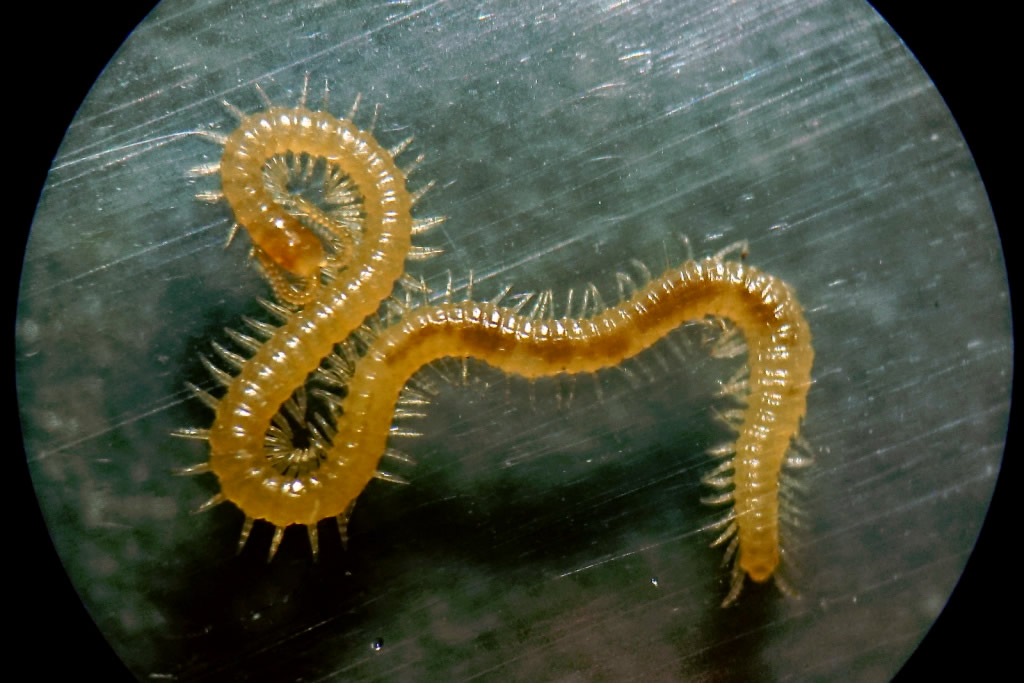Stigmatogaster subterranea (Shaw, 1794)
Common name
Synonyms
Haplophilus subterraneus (Shaw, 1794)
Status:
GB IUCN status: Least Concern
ID Difficulty
Identification
Stigmatogaster (formerly known as Haplophilus) are large (reaching 70 mm, or more, in length) yellowish-brown centipedes, recognised by the combination of a very large number of leg pairs and numerous coxal pores that are easily visible over the ventral and dorsal surfaces of the coxae of the last legs.
Stigmatogaster subterranea has between 77 and 83 leg pairs, while the south-western Stigmatogaster souletinus has at least 93 leg pairs. Only the uncommon Stenotaenia linearis, which is of similar appearance and has up to 81 leg pairs, approaches this number. In addition Henia vesuviana and Geophilus electricus can have more than 70 leg pairs.
More information to allow accurate identification is given in the published identification keys (Barber, 2008 & 2009).
Distribution
Although found commonly throughout much of Britain and Ireland, Stigmatogaster subterranea is most abundant in the south and the west of both countries.
Habitat
It inhabits a wide variety of habitats including woodland, coastal sites and urban sites. Further north and east it becomes increasingly associated with synathropic 'urban' sites, such as gardens and churchyards. Specimens can be found under stones and deadwood and among soil and leaf-litter.
This account is based on that in the 'Centipede Atlas' (Barber, 2022).
References
Barber, A.D. (2022) Atlas of the centipedes of Britain and Ireland. Telford, FSC Publications
Links
ChiloBase 2.0 - World Catalogue of Centipedes: https://chilobase.biologia.unipd.it/searches/result_species/4278










